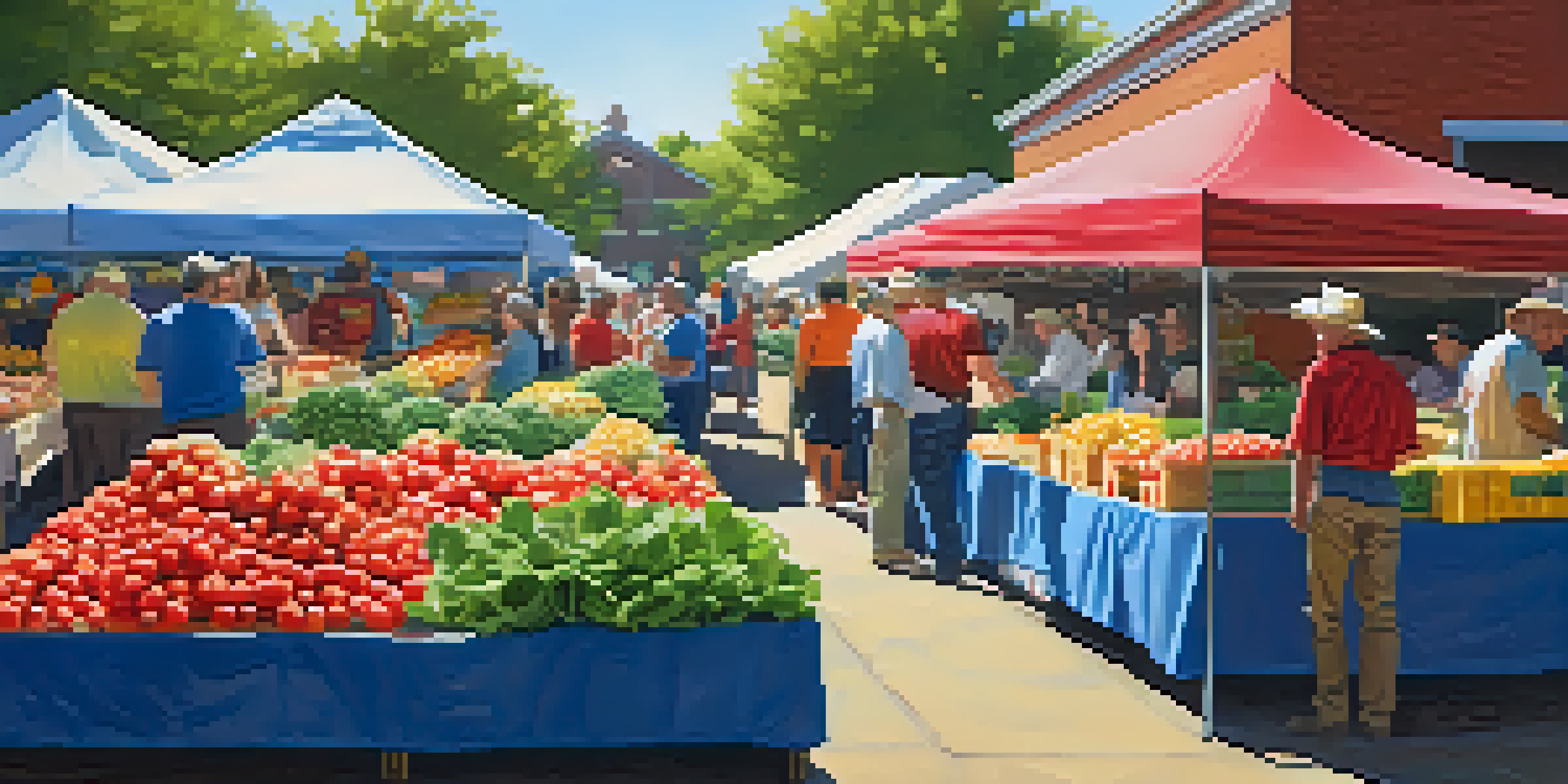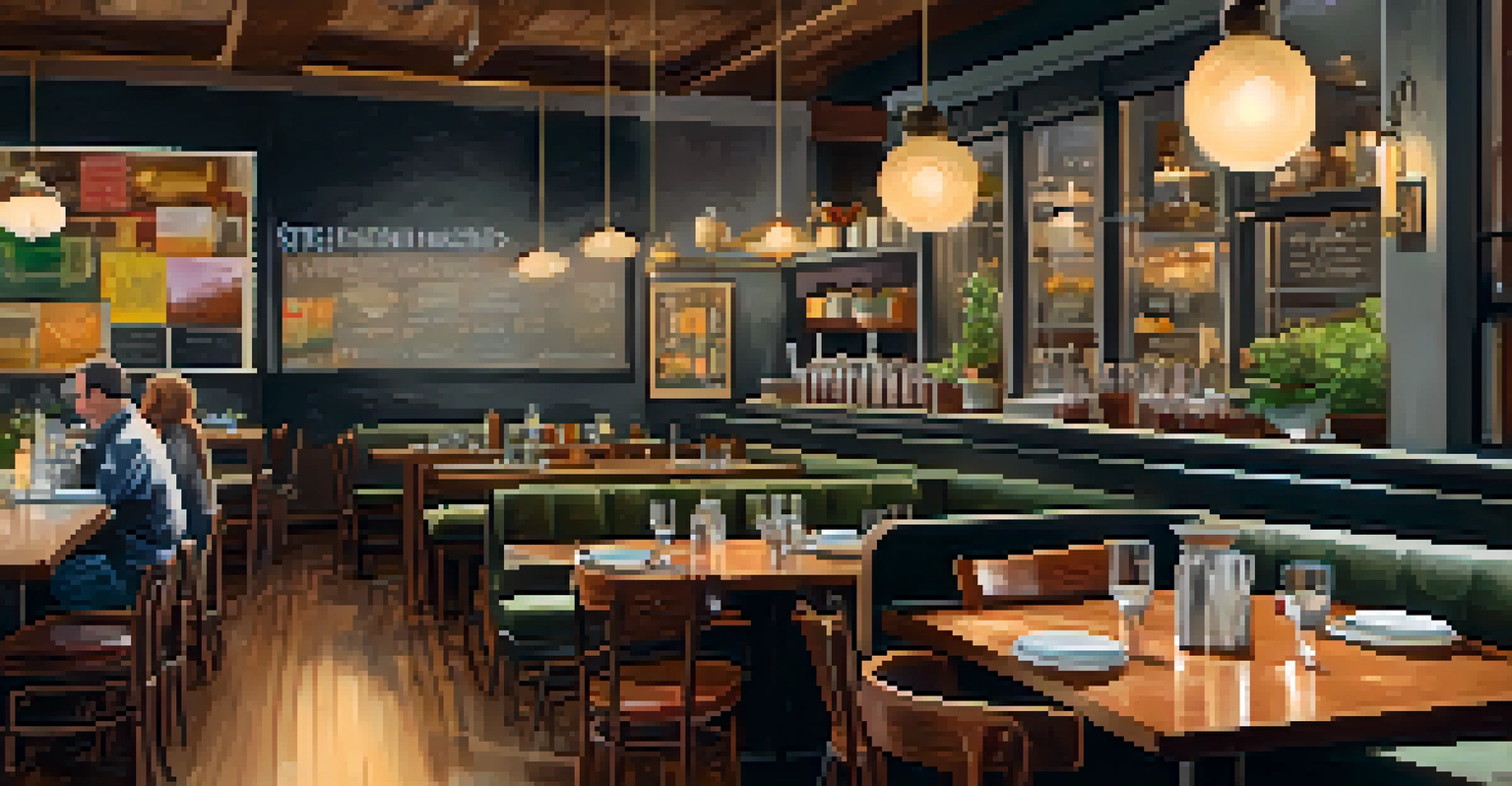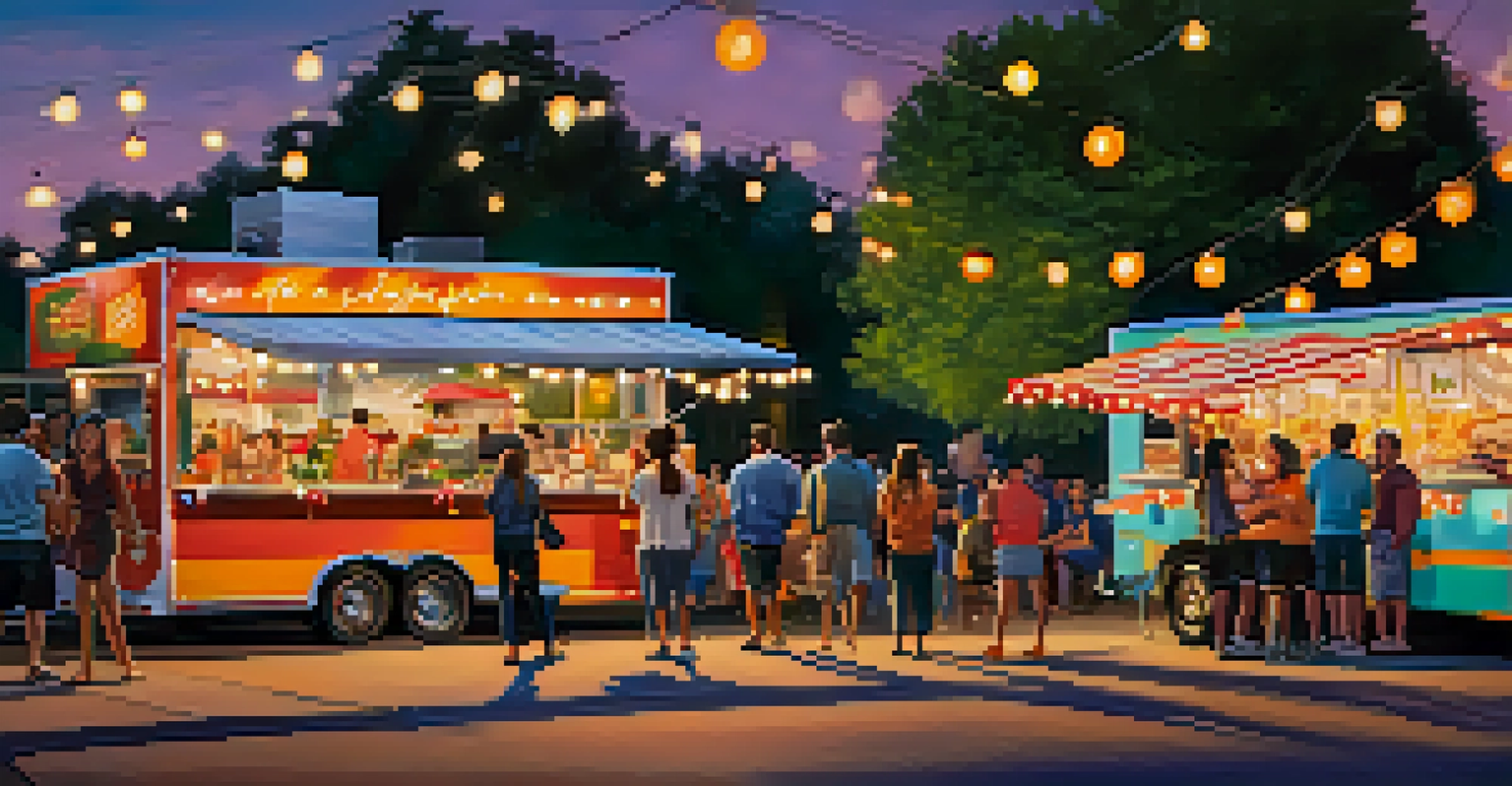The Evolution of Raleigh's Culinary Scene: A Historical Look

Raleigh's Culinary Beginnings: A Taste of Tradition
Raleigh's culinary scene has deep roots, starting in the 18th century with traditional Southern cooking. This era was marked by farming and the use of local ingredients, with dishes like cornbread and collard greens becoming staples. The reliance on homegrown produce laid the foundation for the city’s future culinary development.
Food is not just what we eat; it is a part of our identity and culture.
As the city grew, so did its food culture, influenced by a mix of Native American, African, and European culinary traditions. The blending of these flavors created a unique Southern cuisine that defined Raleigh’s early restaurants. Dining out began to flourish as more families settled in the area, leading to the establishment of local eateries.
During this period, food was not just about sustenance but also community, with meals often shared among neighbors and families. This strong sense of community would later inspire a more diverse food culture as the city evolved.
The Industrial Revolution: A Shift in Culinary Trends
The Industrial Revolution in the late 19th century brought significant changes to Raleigh’s food scene, introducing new technologies and food preservation methods. Canning and refrigeration allowed for a greater variety of foods to be available year-round, leading to more elaborate meals. This era also saw the rise of bakeries and delis, catering to a growing urban population.

As railroads expanded, so did the accessibility of ingredients from other parts of the country. Raleigh's chefs began experimenting with these new ingredients, leading to a culinary renaissance in the early 20th century. The introduction of international flavors began to shape the dining landscape.
Raleigh's Rich Culinary Heritage
Raleigh's food culture, rooted in 18th-century Southern traditions, has evolved through diverse influences and community connections.
This period marked a transition from purely traditional meals to a more eclectic approach, setting the stage for the diverse culinary offerings that would come in the following decades. The changing dynamics of food consumption were mirrored in the city’s restaurants, which began to reflect a broader range of influences.
Post-World War II: A New Culinary Perspective
After World War II, Raleigh experienced a population boom as returning veterans settled in the area. This influx of new residents brought with them diverse tastes and culinary preferences, enriching the city’s food culture. Diners and drive-ins became popular, reflecting the fast-paced lifestyle of the time.
Eating is a necessity, but cooking is an art.
The 1960s and 70s also saw the rise of health consciousness, leading to the introduction of vegetarian and health-focused restaurants. This shift encouraged local chefs to experiment with fresh, organic ingredients, a trend that would continue to evolve. Raleigh began to embrace a more holistic approach to food, emphasizing quality and sustainability.
During this time, Raleigh's culinary scene began to showcase not just Southern cuisine but a variety of global influences, setting the stage for the culinary diversity that characterizes the city today. The desire for unique dining experiences started to take root among residents.
The Farm-to-Table Movement: Fresh and Local
In the late 1990s and early 2000s, the farm-to-table movement gained significant traction in Raleigh, emphasizing the importance of local sourcing. Chefs began forming relationships with local farmers, ensuring the freshest ingredients made it to their kitchens. This connection to the land fostered a renewed appreciation for seasonal produce and traditional cooking methods.
Restaurants began to highlight their local partnerships on menus, allowing diners to know where their food came from. This trend not only enhanced the flavor of the dishes but also supported the local economy. As more people became aware of the benefits of eating locally, the demand for farm-to-table dining grew.
Diverse Flavors of the 21st Century
The city's culinary scene has transformed into a vibrant melting pot, showcasing a wide array of international cuisines and innovative dining experiences.
Raleigh embraced this movement wholeheartedly, leading to the emergence of numerous restaurants dedicated to showcasing local ingredients. The emphasis on sustainability and quality became a hallmark of the city’s culinary identity, attracting food enthusiasts from near and far.
Culinary Diversity: A Melting Pot of Flavors
As the 21st century unfolded, Raleigh’s culinary scene blossomed into a vibrant melting pot of flavors and cuisines. With an influx of immigrants, the city began to see an explosion of international restaurants offering everything from Thai to Ethiopian cuisine. This diversity enriched the local food landscape, providing residents with a plethora of dining options.
Food festivals and cultural events became common, celebrating various culinary traditions and fostering community engagement. These gatherings helped to bridge cultural gaps and introduced many to new flavors and cooking techniques. As Raleigh’s population grew more diverse, so did its culinary offerings.
Restaurants began to reflect this diversity, with chefs creatively blending different culinary styles. The city became a canvas for culinary innovation, where traditional Southern dishes were reimagined with global influences, making Raleigh a must-visit destination for food lovers.
The Rise of Food Trucks and Casual Dining
In recent years, food trucks have revolutionized the culinary scene in Raleigh, offering a casual yet exciting dining experience. These mobile kitchens allow chefs to experiment with flavors and menus without the overhead of a traditional restaurant. Food truck gatherings have become popular social events, bringing together food enthusiasts in a relaxed atmosphere.
The casual dining trend has also flourished, with many restaurants focusing on providing high-quality food in a laid-back setting. This shift reflects the changing dining preferences of residents who crave both quality and comfort. Whether it’s gourmet tacos or artisanal burgers, Raleigh’s casual dining scene has something for everyone.
Sustainability and Innovation Ahead
Raleigh's future culinary landscape is focused on sustainability and innovation, with a growing emphasis on plant-based options and technology in dining.
Food trucks and casual dining establishments have made it easier for locals to explore the city’s diverse culinary landscape. They foster a sense of community, allowing people to connect over shared meals and experiences, further enhancing the city’s vibrant food culture.
The Future of Raleigh's Culinary Scene: What Lies Ahead?
Looking to the future, Raleigh's culinary scene continues to evolve, with a focus on innovation and sustainability. Chefs are increasingly experimenting with plant-based options, reflecting a growing demand for healthier dining choices. This shift promises to shape the next wave of culinary trends in the city.
Moreover, the rise of technology in the food industry is changing how locals experience dining. From online ordering to food delivery services, the convenience of accessing diverse cuisines is greater than ever. This technological integration is likely to drive further innovation in Raleigh’s culinary landscape.

As the city continues to grow, so will its culinary offerings, with an emphasis on community, quality, and sustainability. Raleigh's food culture is poised for an exciting future, one that honors its rich history while embracing new influences and ideas.